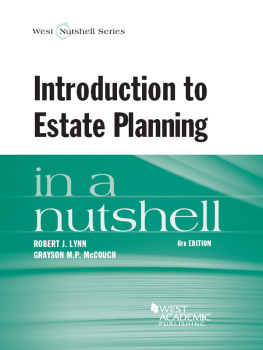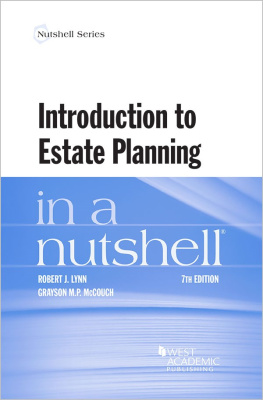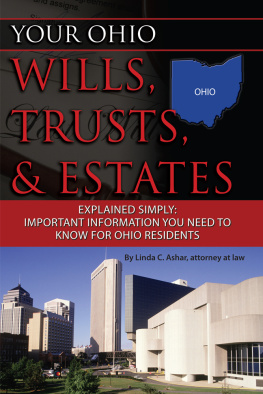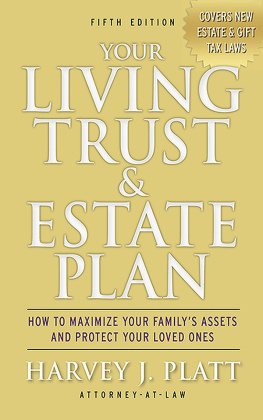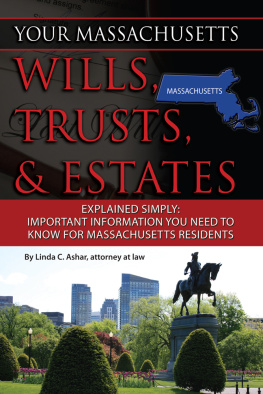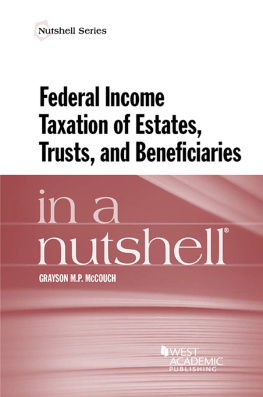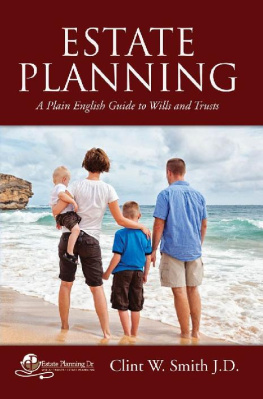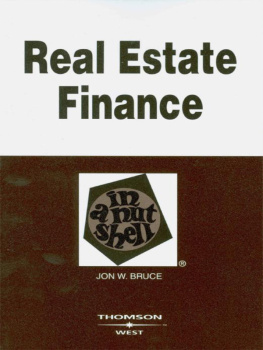Landmarks
Page list

WEST ACADEMIC PUBLISHINGS
LAW SCHOOL ADVISORY BOARD
___________
JESSE H. CHOPER
Professor of Law and Dean Emeritus,
University of California, Berkeley
JOSHUA DRESSLER
Professor of Law, Michael E. Moritz College of Law,
The Ohio State University
YALE KAMISAR
Professor of Law Emeritus, University of San Diego
Professor of Law Emeritus, University of Michigan
MARY KAY KANE
Professor of Law, Chancellor and Dean Emeritus,
University of California,
Hastings College of the Law
LARRY D. KRAMER
President, William and Flora Hewlett Foundation
JONATHAN R. MACEY
Professor of Law, Yale Law School
ARTHUR R. MILLER
University Professor, New York University
Formerly Bruce Bromley Professor of Law, Harvard University
GRANT S. NELSON
Professor of Law, Pepperdine University
Professor of Law Emeritus, University of California, Los Angeles
A. BENJAMIN SPENCER
Professor of Law,
Washington & Lee University School of Law
JAMES J. WHITE
Professor of Law, University of Michigan
I
INTRODUCTION TO ESTATE PLANNING
IN A NUTSHELL
SIXTH EDITION
by
ROBERT J. LYNN
Late Professor of Law
Ohio State University, Moritz College of Law
GRAYSON M.P. McCOUCH
Gerald Sohn Professor of Law
University of Florida, Levin College of Law

Mat #41489502
II
The publisher is not engaged in rendering legal or other professional advice, and this publication is not a substitute for the advice of an attorney. If you require legal or other expert advice, you should seek the services of a competent attorney or other professional.
Nutshell Series, In a Nutshell and the Nutshell Logo are trademarks registered in the U.S. Patent and Trademark Office.
COYPRIGHT 1975, 1978, 1983, 1992 WEST PUBLISHING CO.
2004 West, a Thomson business
2014 LEG, Inc. d/b/a West Academic
444 Cedar Street, Suite 700
St. Paul, MN 55101
1-877-888-1330
West, West Academic Publishing, and West Academic are trademarks of West Publishing Corporation, used under license.
Printed in the United States of America
ISBN: 978-0-314-28916-2
III
PREFACE
___________
This book is a revised edition of a work which first appeared in 1975. It is intended for law students, lawyers, and non-lawyers who are interested in the areas of wills, trusts, future interests, fiduciary administration, insurance, pensions, and federal estate and gift taxation.
Because each chapter stands as much as possible as a separate unit, we have included no internal cross-references, and occasionally a particular topic is discussed more than once. Successive chapters do, however, tend to build on preceding chapters. Therefore, before reading (say) Chapter 8 on trusts, it is helpful to have a working knowledge of the material presented in Chapters 1 through 5.
Citations are few. In a short volume of this sort, it is not feasible to give sufficient citations to satisfy a specialist without distracting and discouraging the non-specialist. Fortunately, there are several excellent treatises directed to the former, and we have therefore chosen to try to assist the latter.
We are deeply saddened by the loss of Professor Lynn, the original author of this book, who passed away in 2008. During a long and distinguished career, he was universally admired and respected for his scholarly erudition and practical wisdom. In addition, he was a beloved teacher renowned for his gentle wit and patient, courteous nature. He is IV remembered with affection and gratitude by colleagues, friends, and former students.
GRAYSON M.P. MCCOUCH
December 2013
V
OUTLINE
___________
VI
VII
VIII
IX
X
XI
XIX
INTRODUCTION TO ESTATE PLANNING
IN A NUTSHELL
SIXTH EDITION
CHAPTER 1
THE ESTATE AND ESTATE PLANNING
1.1 ESTATE PLANNING AND THIS BOOK
Estate planning refers to the process of ordering ones property holdings and dispositions, while keeping in mind the possibility of retirement and the certainty of death. Estate planning draws on several distinct substantive fields of law, including property, wills, trusts, future interests, insurance, employee benefits, health care, and taxation. Estate planning is sometimes used as a synonym for tax planning or business planning. Although taxation and the existence of business interests are often an important part of an estate plan, the emphasis in this book is on estate planning in the more traditional sense, with allusions to taxation, business interests and other matters to the extent that they are necessary and helpful.
Estate planning in the more traditional sense is of special interest to the middle class, the well-to-do, and the wealthy because it deals with the conservation and transmission of wealth from generation to generation. Nonetheless, this area of the law should not be perceived as the preserve of practitioners who specialize in concocting elaborate tax avoidance schemes for rich clients. Most of estate planning is a part of basic legal literacy. A properly educated lawyer is expected to be acquainted with it. Although only a small portion of the practicing bar regularly engages in probate and trust work, many lawyers draft wills and trusts. Lawyers in general practice represent clients who are beneficiaries (or disappointed putative beneficiaries), executors, administrators, and trustees. They encounter problems in fiduciary administration, including difficult matters of conflict of interest. Lawyers themselves are often fiduciaries.
To the extent that estate planning is a specialty, a student may spend a disproportionate amount of time mastering legal doctrines and devices that seem arcane and removed from the practical concerns of daily life. For example, in drafting trust instruments, lawyers do not use the Doctrine of Worthier Title or the Rule Against Perpetuities in the same sense that they use the law on powers of appointment, but some basic knowledge of these doctrines is nevertheless desirable. And with the widespread enactment of statutes authorizing pour-over wills, the device called incorporation by reference has lost much of its erstwhile significance. But incorporation by reference is still available to lawyers drafting wills, and its limitations should be understood. A competent lawyer does not knowingly supervise the execution of a will by a person lacking testamentary capacity, but if there is a realistic possibility that testamentary capacity will be called in question after the testators death, the lawyer should take that risk into account in advising the client. In short, the specialist must be an exceptionally well-informed lawyer. The better informed the general practitioner, the more effectively he or she can represent clients with problems in wills, trusts, future interests, fiduciary administration, taxation, and related areas.
The materials in this book are prepared principally for a person who has had an introduction to property law, but who has not yet studied such subjects as trusts and future interests. It does not follow that this book purports to cover any subject fully. On the contrary, coverage with respect to most topics is selective, and is intended to acquaint the reader as quickly as possible with some of the key issues that arise in ascertaining a persons existing property arrangements and in determining whether and how those arrangements might be modified to carry out the persons intended disposition more reliably and efficiently. For example, a person might be required as a condition of employment to participate in a contributory pension plan. Although the employee cannot opt out of the forced saving that results from participation in the pension plan, he or she might nonetheless review the available choices under the plan for designating a beneficiary to receive distributions in the form of a lump sum or a survivor annuity upon the employees death. Here, the employees property arrangements are not altogether a matter of choice, but even so, to the extent that choice exists, it should be exercised with care.

